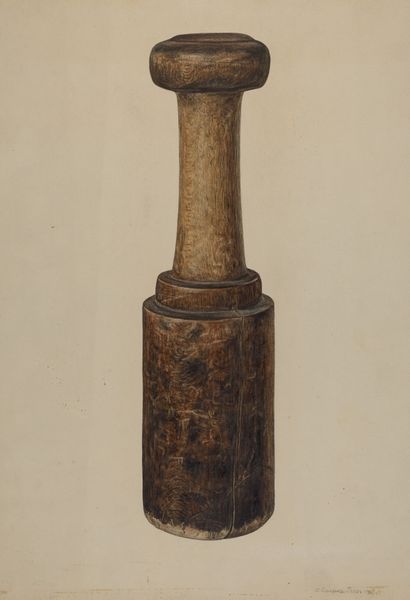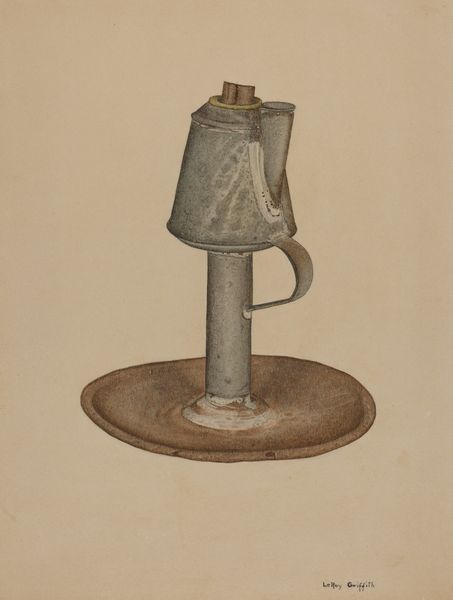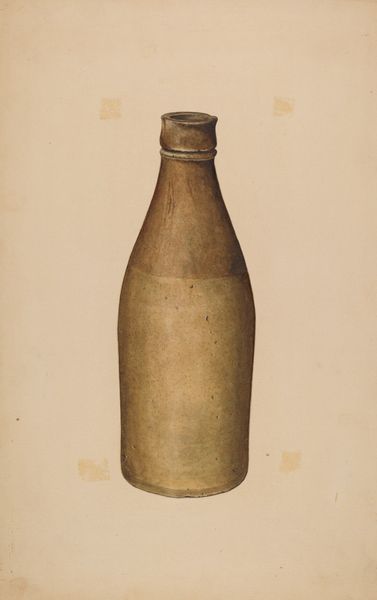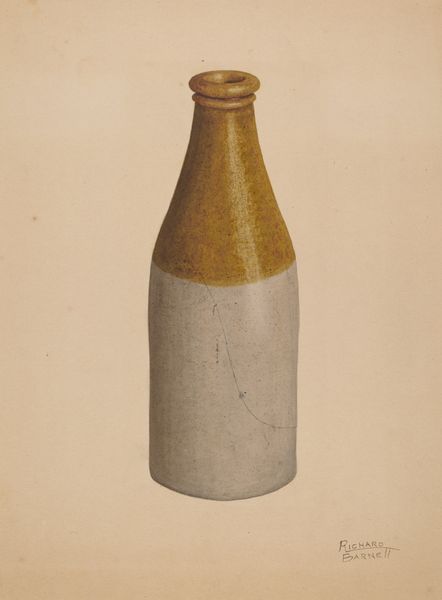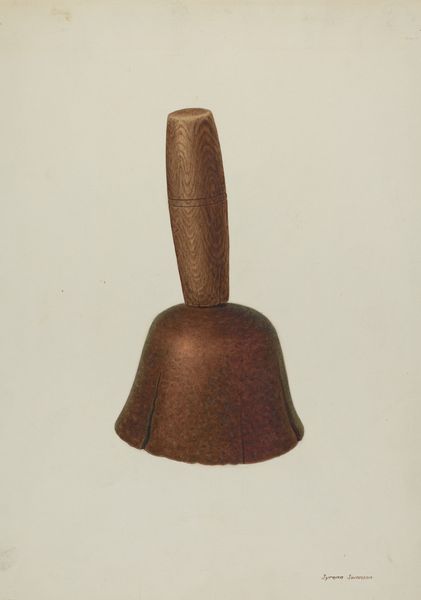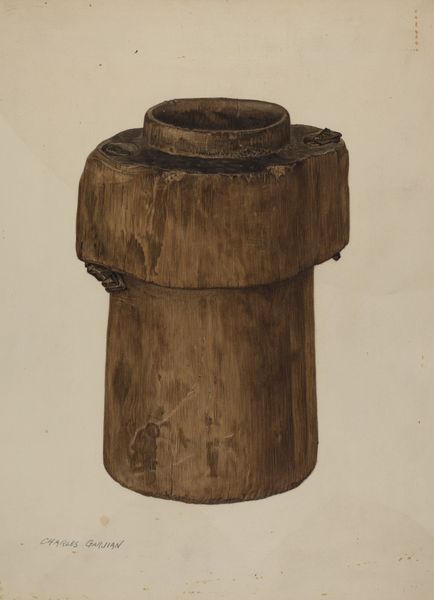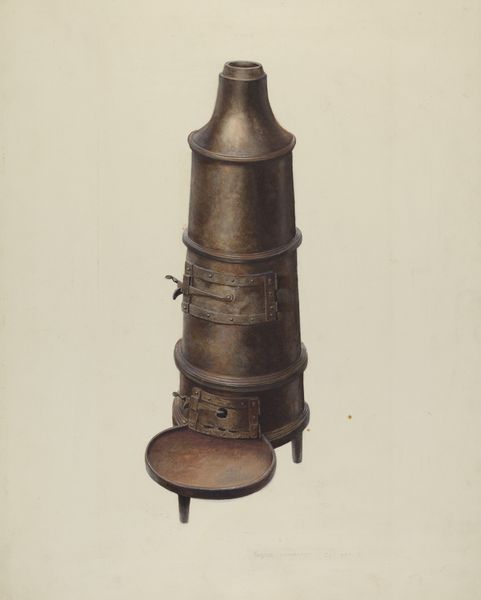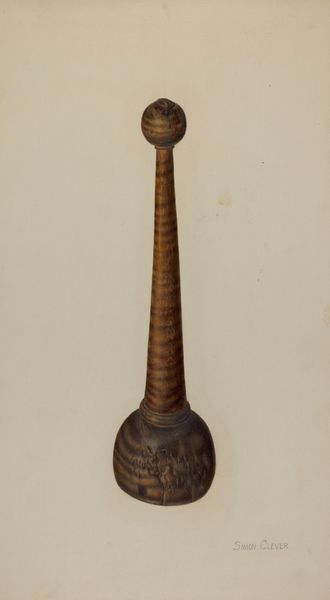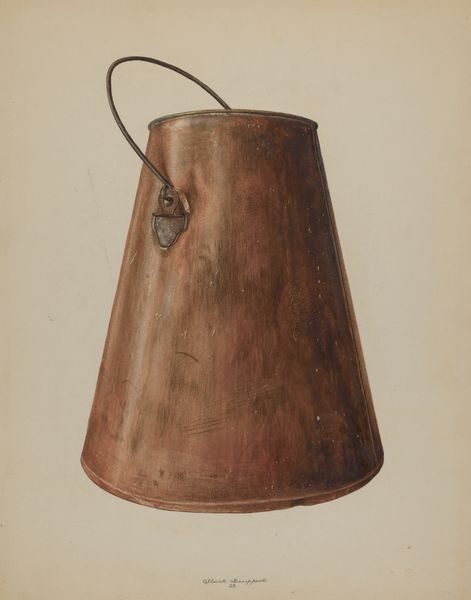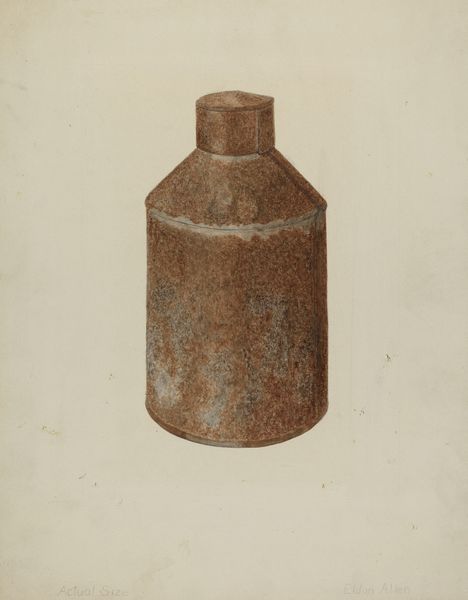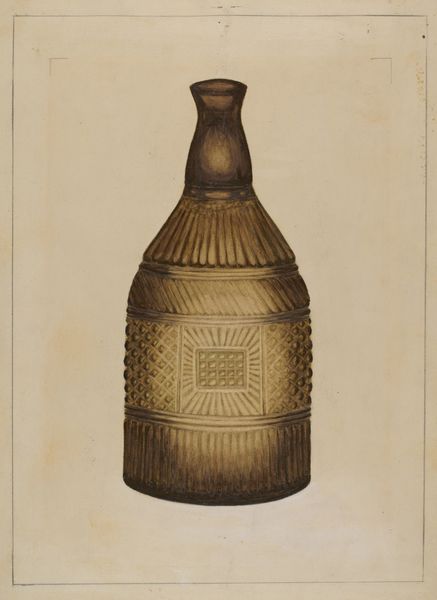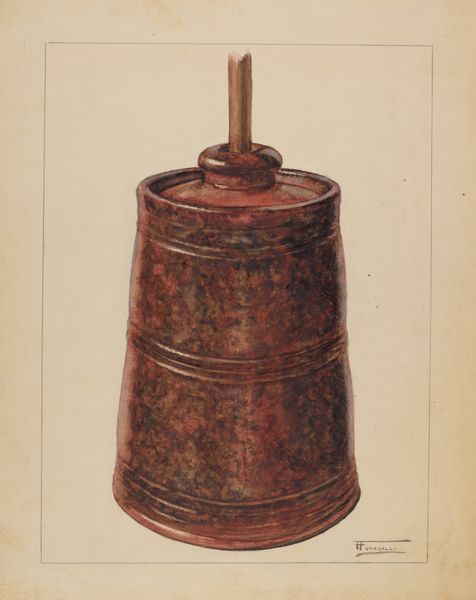
drawing, watercolor
#
drawing
#
watercolor
#
watercolour illustration
#
modernism
#
watercolor
Dimensions: overall: 35.5 x 24.6 cm (14 x 9 11/16 in.)
Copyright: National Gallery of Art: CC0 1.0
Editor: Here we have Rose Campbell-Gerke's "Nozzle," created sometime between 1935 and 1942. It's a drawing rendered in watercolor, and I must say, there's something almost mournful about this object, standing alone on the page. How do you interpret this work? Curator: The choice to isolate and elevate such a functional, almost mundane, object during that period is particularly striking. Given the dates, we have to consider the socio-political context of the late Depression era and the looming shadow of World War II. This "nozzle," stripped of any immediately obvious narrative, could be seen as a commentary on industrialization and perhaps the increasingly mechanized nature of labor and even warfare. What does the rendering in watercolor— a traditionally "feminine" medium — suggest to you in contrast to the rigid geometry of the nozzle? Editor: I hadn't considered the choice of medium in that light! Perhaps the delicate watercolor softens the harshness of the industrial object, making a statement about the roles of women in a rapidly changing society. Curator: Precisely. The almost obsessive detail in the rendering further complicates our understanding. Is it a celebration of functional design, a lament for a lost way of life, or even a critique of the dehumanizing aspects of industrialization? What does the vertical composition evoke in relation to patriarchal power structures? Editor: It's fascinating how a simple object can be such a rich site of cultural analysis. It certainly prompts a re-evaluation of everyday objects and their implicit meanings. Curator: Absolutely. And it underscores the vital role art plays in critiquing and documenting the cultural currents shaping our lives. Seeing it this way allows us to understand "Nozzle" not just as an object, but as a signifier of larger societal anxieties and power dynamics. Editor: I agree! I’ll definitely consider all of these layers in my understanding of this, and similar works, moving forward.
Comments
No comments
Be the first to comment and join the conversation on the ultimate creative platform.
